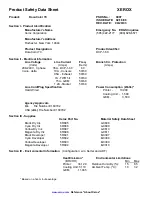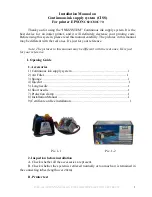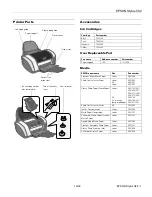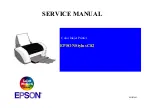
120
Appendix
When changing using a low frequency less than once an hour, you can save to non-volatile memory; however,
when changing at a higher frequency, you need to save to volatile memory.
When the change is successful, the advertising data is changed.
Request
See the POST parameters in Table 10 Response for the parameters.
Response
Table 9 Response Header
Table 10 Response
Content-Type: text/json; charset=utf-8
http://(printer IP address)/webconfig/beacon.cgi
Content-Type: application/json; charset=utf-8
Access-Control-Allow-Origin: *
Access-Control-Allow-Methods: POST, GET, OPTIONS, HEADER
Access-Control-Allow-Headers: Content-Type, Content-Length, Authorization
X-Content-Type-Options: nosniff
X-XSS-protection: 1; mode=block
X-Frame-Options: deny
Content-Security-Policy: default-src 'none'
X-RateLimit-Limit: 1 (when type=static only)
X-RateLimit-Remaining: 1 or 0 (when type=static only)
X-RateLimit-Reset: 1390941626 (when type=static only)
WWW-Authenticate: Digest realm="<IPaddr>", nonce="xxxxxxxxxxxxxxxxxxxxxxxxxxxxxxxxxxx", qop="auth"
Function
POST Parameters
Results
Response
Updating the configuration
script in volatile memory
{
“type” : “volatile”,
“description”: “<The
string for the
configuration script that
performed escape
processing>”
}
Update successful
200 OK
Update failed
When the parameter is too
long
413 Request Entity Too Large
Update failed
When an error occurs
when applying a new
configuration script
500 Internal Server Error
Deletes the configuration
script from volatile memory
{
“type” : “volatile”,
“description”: “delete”
}
Deleting successful
200 OK
Deleting failed
500 Internal Server Error









































